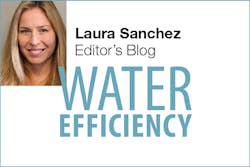A field of golden sunflowers stretches along the Neuse River Greenway in Raleigh, North Carolina. Their faces shift, following the sun’s path overhead.
“Right now it looks like a sea of gold,” Tim Woody, superintendent of the Neuse River Resource Recovery Facility, told North Carolina Public Radio.
The flowers—one of several crops grown on facility land—are part of an initiative to convert biosolids, the nitrogen-rich organic materials produced by the wastewater treatment plant, into energy.
Neuse River’s initial sunflower planting was 27 acres in 2010, funded by a $100,000 grant from the Biofuels Center of North Carolina to test the potential for crop-based biodiesel. The team added canola in 2011, and today the crop has expanded to 72 acres.
Sunflower and canola seeds contain oils that can be processed into biodiesel. The seeds produced on Neuse River land are harvested and converted to biofuel that can be mixed with diesel to help balance the facility’s energy use.
The first sunflower crop provided 29,700 pounds of oilseed that was used to produce 1,258 gallons of biodiesel—a total of 46 gallons per acre, at a cost of $2.35 per gallon. Replacing 10–20% of the 25,000 gallons of diesel fuel that the plant uses each year with biofuel will support the plant’s generators along with the backup generators at each pump station.
The seeds are currently processed off-site but in the coming years, Woody and his team plan to install the processing equipment on-site. Once the seeds are crushed, “making the biodiesel at that point is relatively easy,” he explains. “You don’t have to do a lot to the oil. A typical recipe includes sodium hydroxide [lye], alcohol [methanol], heat, and the oil.”
We’re inspired by this creative solution. What methods of converting biosolids to energy has your organization explored?
